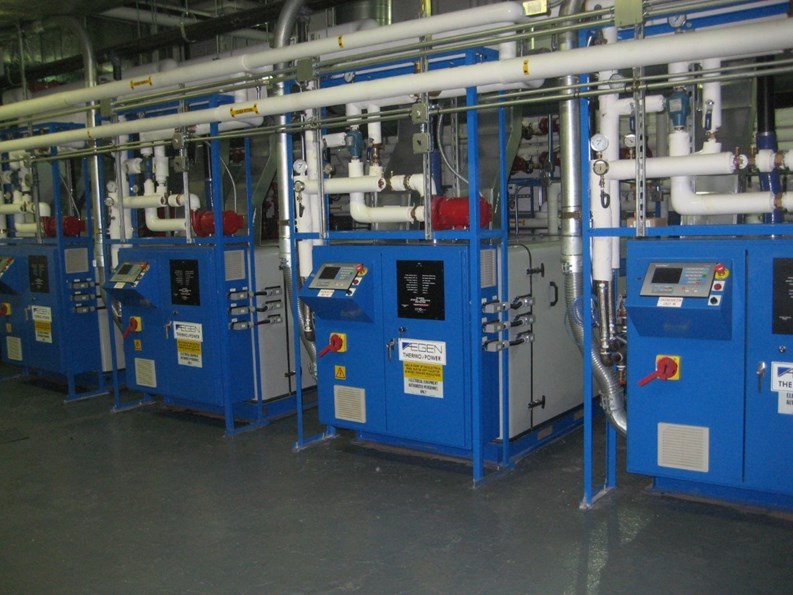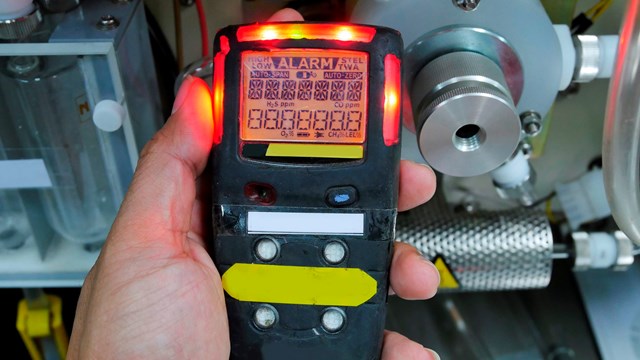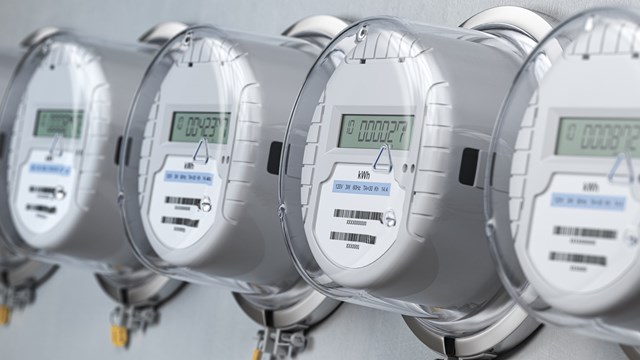The cost of producing energy is on the rise, a seemingly never ending ascent that places big heating and cooling bills in the hands of building owners. These costs are then passed down to residents. As a result, many boards are searching for ways to reduce energy expenditures. For some, cogeneration is the answer.
What exactly is cogeneration? Paul Morisi, lead program manager for Brooklyn-based National Grid explains that it is a process that allows a building owner to produce power through a natural gas engine. “Cogeneration has two byproducts which derive from recovering waste heat from the engine,” he says. “This waste heat can be used to produce heat or cooling for the building.”
This movement is gaining traction. “Cogeneration is a fairly widespread phenomenon both in Manhattan and in the outer boroughs. National Grid has been promoting cogeneration for a long time and there are hundreds of buildings already using it as well as many industrial and institutional buildings,” says Morisi. “Both New York City and New York State also promote the widespread adoption of cogeneration because of its environmental and energy savings benefits.”
Cogeneration requires a CHP (combined heat and power) system to utilize the recoverable thermal energy generated during the running of the engine-generator. “The cost of the fuel and maintenance required to run the engine closely matches the cost saved by not purchasing that quantity of electricity from the utility,” says Stephen Stone, president of the Long Island-based DSM Engineering Associates, PC. “The fuel saved by not running a boiler, electrical heater or purchased steam to obtain the heat generated by the CHP is the driving force for the CHP economics.”
“Interest in CHP really took off in 2008 when Mayor Bloomberg unveiled his PlaNYC sustainability vision, which aims to reduce the city’s carbon emissions 30 percent by 2030,” says Dale Desmarais, sales manager at Aegis Energy Services, which engineers, manufactures and installs modular, natural gas-fueled CHP systems. “CHP systems reduce reliance on other utilities, reduce energy costs and reduce carbon footprint. CHP saves on energy costs and emissions because one fuel source, in this case, natural gas, produces two sources of energy: heat and electricity.”
“Now, he says, “there is considerable increased interest in CHP since thousands of buildings are being required to switch out of No. 6 heating oil into either No. 2 or natural gas. Many are opting to go directly to natural gas and install energy saving CHP systems simultaneously. Aegis’ CHP systems operate with natural gas, which currently costs about 30 percent less than fuel oil.”
Not every building will benefit from cogeneration, though, and the bare minimum operating system requires a 50kW unit. For example, a multifamily building that does not use hot water for heating and doesn’t have chilled water required for air conditioning the 50 kW units’ heat output will provide domestic hot water (DHW) for about 150 apartments. “Any building smaller than that will not be able to utilize the waste heat fully and will have to throw away some of the thermal energy (energy cost savings) and extend the time necessary to pay off the cost of the CHP system,” says Stone. “If a building has hot water heating and/or chilled water cooling—which can be created from the hot water by absorption cooling equipment—the building size can be reduced.”
First Steps
When approaching cogeneration, the number one question to ask is: how many units make it worthwhile? Morisi and Stone provided a range between 75 to 150 units with utility costs of $100,000 or more (although the more/higher the better). The second indicator is determining whether or not the building is master-metered, master submetered or direct metered. “If the building apartments are direct-metered the electrical loads available to the CHP equipment are drastically reduced and the minimum size of a building that can economically utilize available sizes of CHP equipment increases to about 300 apartments,” says Stone.
Aegis, for example, says Desmarais, has installed CHP in some 30 buildings in New York City’s five boroughs, primarily co-ops and condos. The company’s energy analysts believe that a minimum of 100 units is the “basic threshold” where CHP makes the most economic sense. “The more important factor is the thermal load, i.e., how much heat the building uses,” Desmarais says. CHP is not a backup or primary system; it operates in conjunction with an existing boiler system and the existing electric utility. CHP supplies the base load and utilities supply the peak. Buildings such as Schwab House, The Hamilton, and Hampton House are some of Aegis’ clients.
He also says that buy-in from owners is necessary. “The first step in installing a CHP system is to educate the building’s stakeholders,” Desmarais says. “Condominium buildings are managed by multiple interests: unit owners, board members, property managers, maintenance managers, etc. A CHP system, while basic to physics, requires considerable explanation to this wide array of interests, which is often a lengthy process. Once the board agrees to move forward, the financing of the system is worked out and engineering and compliance filings begin. A complete system can then usually be installed in three to four months,” he adds.
Herbert Hirschfeld, a professional engineer that operates congenerationonline.com, explains that master metered buildings are far more compatible to cogeneration. “Because the electric load to the cogeneration units are not restricted to only satisfying the common area load, a greater number of thermal energy from the cogeneration system can be utilized,” he says.
Additional considerations include understanding the criteria that affects thermal energy including the cost of the fuel required to support DHW, space heating, space cooling and heated swimming pools. “Beyond these preliminary items are availability of space for the new equipment, interface with existing building and utility systems and other considerations such as location and access for maintenance,” says Stone.
Utility providers also see the benefit of cogeneration and offer advice and recommendations for curious building owners. “Generally, a building with a consistent thermal load, with hot water, process steam, and/or steam cooling, is a good candidate for cogeneration,” says Margaret Jolly, Consolidated Edison’s distributed generation ombudsman. “Any building owners seriously considering cogeneration should evaluate her or his options the same way anyone would for a big investment of this nature—do a cost-benefit analysis tailored to the property and the owner’s own circumstances, in order to determine if the job is affordable and the payback period makes sense.”
Once the decision is made to move forward, there are costs involved in switching over, explains Morisi. For example, if a building is heated by oil the tank might have to be decommissioned. To install a new system, the cost range falls between $3,000 to $4,000 a kW for a 100 kW engine. “But there are incentives from the New York State Energy Research and Development Authority that can help bring down the cost significantly,” he says. Hirschfield adds that greater revenues can also be realized from the New York Independent System Operator by participating in their curtailment programs.
Hundreds of New York City buildings have cogeneration systems, including Penn South, North Shore Towers, Amalgamated Warbasse, Manhattan Plaza, the Millennium Tower Residences and numerous other residential towers in Battery Park City, and many more. In 2009, Schwab House, a 646-unit cooperative on the Upper West Side, partnered with NYSERDA and entered a shared savings program with Aegis Energy Services, a Massachusetts-based developer of modular cogeneration systems, to install the largest co-gen system in the city. The $1.6 million CHP system installation was made possible with a $402,000 grant award from NYSERDA. The CHP system runs parallel to the Con Ed grid and the recovered waste heat is used to provide space heating and domestic hot water for the building, as well as drive an absorption chiller system that is producing more than 20 tons of cooling for the lobby, hallway and common areas.
Jolly didn’t feel comfortable providing ballpark numbers because every building and project is different. “New equipment has to be assessed, purchased and installed. New gas supply may require cost to run new gas lines to the building,” she says. “Cost can vary widely depending on the size of a building and its needs. Small cogeneration projects require something in the neighborhood of 65 kilowatts while larger projects are typically around 400 kilowatts. Because of that costs can vary a lot so it’s worth checking with a developer about a specific job.”
According to a 2004 report by the New York City Energy Policy Task Force, cogeneration systems average 70 percent to 95 percent efficiency compare to an approximate 50 percent efficiency of conventional heating systems. Cogeneration companies claim that their systems are up to 2½ times more efficient than the electric utility and that they can reduce monthly energy expenses from 30 percent to 60 percent. Estimated average payback period for a typical large apartment building is said to be three to five years.
For further information during the discovery process, Con Edison recommends boards and buildings to review its distributed generation website: www.coned.com/dg. “It also is helpful to work with a contractor who has done installations in New York City, who has worked with Con Edison’s or National Grid’s Gas Department, as well as with the New York City Department of Buildings, which also has specific requirements,” says Jolly.
Stone, who has assisted countless clients with cogeneration, explained that working with a utility, such as Con Edison, is streamlined because regulations and protocols are in place. “Generally the CHP equipment being installed uses natural gas as its engine fuel and connects in parallel—sharing the electrical load—with the electric utility,” he continued. “The utilities are obligated in New York State to provide methods for incorporating and interconnecting distributed CHP to work with their systems. The technique is to file with the utility using available applications that meet the utilities’ published specifications for CHP and receiving permission from them to interconnect.” He adds that meeting specific criteria differs with each utility.
Moving Forward with Cogeneration
Once a building has done its due diligence and worked with its utility, system selection is the next step. Hirschfeld explains that a typical cogeneration unit designed to satisfy the domestic hot water load of a 200-unit building will generally occupy a space of approximately 10 feet wide by 12 feet long and 7 feet high. The unit will most likely be located near the building‘s electrical and mechanical systems. Unit types include microturbine and internal combustion engine—the latter is less expensive.
While there are reputable companies offering cogeneration services, the process can be cumbersome and Hirschfeld warns to investigate companies because many are “here today and gone tomorrow.”
There is an inherent environmental value-add with cogeneration and savings realized by shareholders is measurable although the return on investment is not immediate. “It can help to significantly lower the utility costs of the building because cogeneration will produce power at a cheaper rate,” says Morisi. “The payback can be as quick as three years and even lower with state incentives. Moreover, if the natural gas engine is serviced properly it can perform well for more than twenty years to help reduce the building’s utility costs.”
When asked what are the benefits to cogeneration, Stone said that if a building owner or a board follows a checklist and meet requirements, it’s a win-win situation. “Essentially, if there is space available for the equipment and the building meets the size criteria outlined, almost every multifamily building in the New York metropolitan area should consider the potential benefits of CHP,” says Stone.
When asked what are some the potential pitfalls, Jolly explains that capital investment, necessary maintenance and the readily available access to electricity hassle-free from the existing grid would be reasons not to put forth the effort. “Having said that, exploring options to use energy efficiently and making good, sound evaluations about the best way to do that is always a good thing. Con Edison, for example, is confident that the energy efficiency programs being offered by the company constitute the best first step towards creating a better, energy-efficient future for both residential and commercial customers, with rebates and other incentives being offered,” she continues. “But after those steps, there are others that can be taken that make good sense in a given building, or in a given building complex. Again, the practicality of the measures taken can and should be evaluated on a case by case basis.”
While cogeneration is being adopted by more and more buildings in the greater New York area, buildings should not consider the premise of selling surplus energy back to the utility companies as it is a rare occurrence. “At this time, there is no possibility of selling electricity back to Con Edison, except at the substation. Voltage levels are not practical on systems smaller than several megawatts,” says Stone. “Upstate utilities and LIPA have different policies. If a building is in an area where it’s possible and has the potential for sell back then a buy-back agreement with the utility would have to comply with that utility’s rate structure for buy back of power which will typically be at a rate that is lower than the rate at which it purchases electricity.”
W. B. King is a freelance writer and a frequent contributor to The Cooperator and other publications.










2 Comments
Leave a Comment